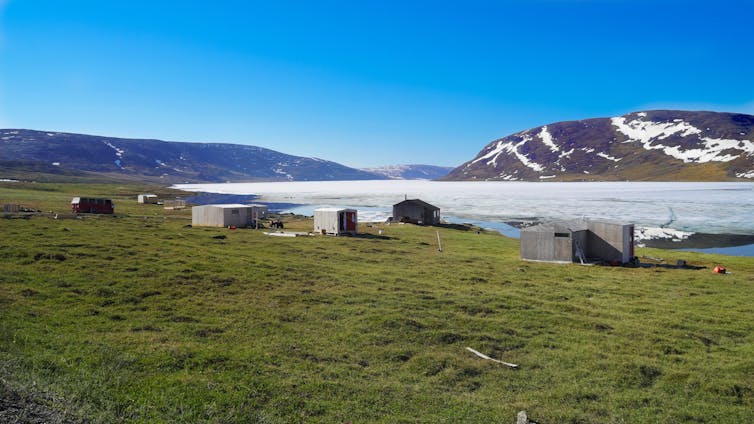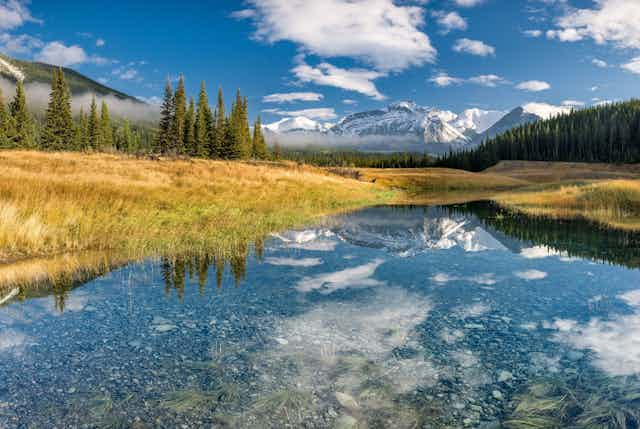Over the last decade, Canada has seen an increase in the number of initiatives to green or circularize the economy through sustainable development, as well as those that support and enhance Indigenous environmental leadership.
Both projects are desperately needed given our rapid progress towards capitalist-driven climate catastrophe. Although there is interest in creating new economic systems, Canada is failing to recognize the transformational potential of Indigenous-led conservation economies.
These economies have immense reconciliatory potential and need to be respectfully supported and engaged with in order to create new shared and equitable economic systems.
Environmental management is not just ecological. All social and economic drivers require respect for earth, water and animals in order to halt degradation and enhance environmental and human health.
Canada’s commitments
In September 2015, Canada along with every other United Nations Member States adopted the 2030 Agenda for Sustainable Development. Seventeen action categories were identified with the purpose of “leaving no one behind” and with the goal of bringing everyone in Canada up to a level of economic stability connected to overall environmental health.
In November 2021, Canada then established a target to protect 30 per cent of the country’s lands and oceans by 2030.
Alongside this announcement was a recognition of Indigenous Protected and Conserved Areas (IPCA). They have been dubbed “territories of life” functioning as ecosystem networks in traditional territories. They are Indigenous-led and represent a long-term commitment to conservation that elevates Indigenous rights and responsibilities.
These IPCAs have also become generative sites for Indigenous economies, with the potential to influence real change in economic development practices.
The processes and activities which contribute to Indigenous-led conservation can be referred to as environmental stewardship practices. Indigenous people generally take a holistic approach to the stewardship and management of their territories which has resulted in harmony with the land and sustained biodiversity conservation.
Understanding how stewardship produces values beyond monetary ones, can create vital learning opportunities for alternatives to conventional development.

New enterprises and environmental management
Guardians and Watchmen enterprises are two forms of Indigenous environmental stewardship. In both cases, cultural values are respected and utilized to create new enterprises and environmental management systems.
In Kitasoo Xai’Xais on the central coast in British Colombia, community leadership has created a robust tourism program through the Spirit Bear Lodge and Coastal Stewardship Network. There, community members are employed to steward their traditional territories, becoming guides for tourists and sharing their knowledge and experiences within their unique coastal region.
These reciprocal economies are not based on the creation of private wealth. First Nations, Métis and Inuit communities across Turtle Island are pursuing sustainable development by investing in clean energy transitions, working as scientists to support ecosystem research, creating regional conservation partnerships and advocating for our shared habitats through collective movements.
Diversifying our understanding of economies
Amidst louder calls for Indigenous Peoples’ free, prior and informed consent — which means Indigenous people need to give or withhold consent to a project that may affect them or their territories — on land-intensive development proposals, decolonial movements like #LandBack and various projects to diversify our understanding of economies have taken root.
A recent article by geographers Lindsay Naylor and Nathan Thayer investigates how power operates when considering decolonial and anti-racist solutions as a necessary evolution of diversifying our economies.
In the article they explore how the diverse economies framework “neglects the theft and occupation of land that unfolded over the previous centuries of colonialism, which fundamentally changed people’s relationships to the land.”
In settler-led economic development systems, conservation is considered an external feature to be managed by capital investment projects and philanthropic activities. They propose flipping the script and paying close attention to the voices and actions of Indigenous Peoples who can offer some much-needed guidance.
The authors of a recently published Yellowhead Institute paper, Cash Back, write:
“The multiplicity of Indigenous economies is not a future prospect: it is already here … At their core, what makes them Indigenous economies is that they do not exploit that which they depend upon to live, including people. And they protect a world that is not prepared to value people’s time, homelands and harvests solely in cash.”

Moving forward
New conservation-based economic developments in the blue economy, the project finance for permanence — which gives permanent and full funding to conservation areas — and regional conservation finance actions are excellent examples of how Indigenous knowledge and voices are beginning to influence the way national development policies are informed.
These plans and programs involve diverse perspectives on how to pursue economic development which can be thought of as “parallel rows,” knowledge systems stemming from distinct settler and Indigenous knowledge systems.
This parallel row idea comes from the Two Row Wampum treaty which represents the peaceful and respectful coexistence of two distinct nations.
The brilliance of this term lies in its ability to propose a joint system where both Indigenous and settler perspectives are self-directed and complementary in collaboration without having to be integrated together. A resurgence of Indigenous autonomy and culture is a key feature of this strategy.
We may all learn from Indigenous Peoples’ continuous collective efforts to shift away from settler-based models of accumulation and toward maintaining and developing healthy economies of abundance.

